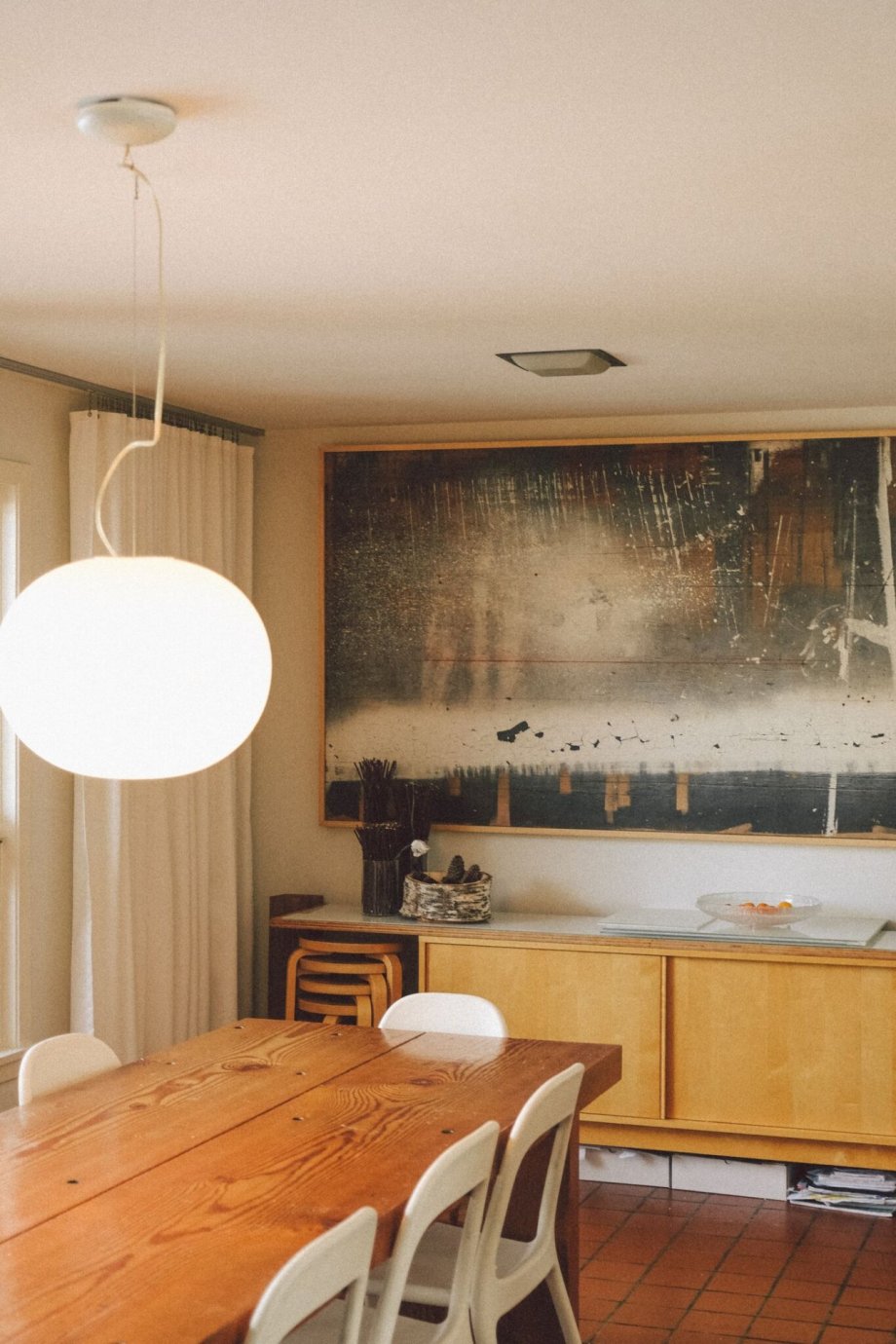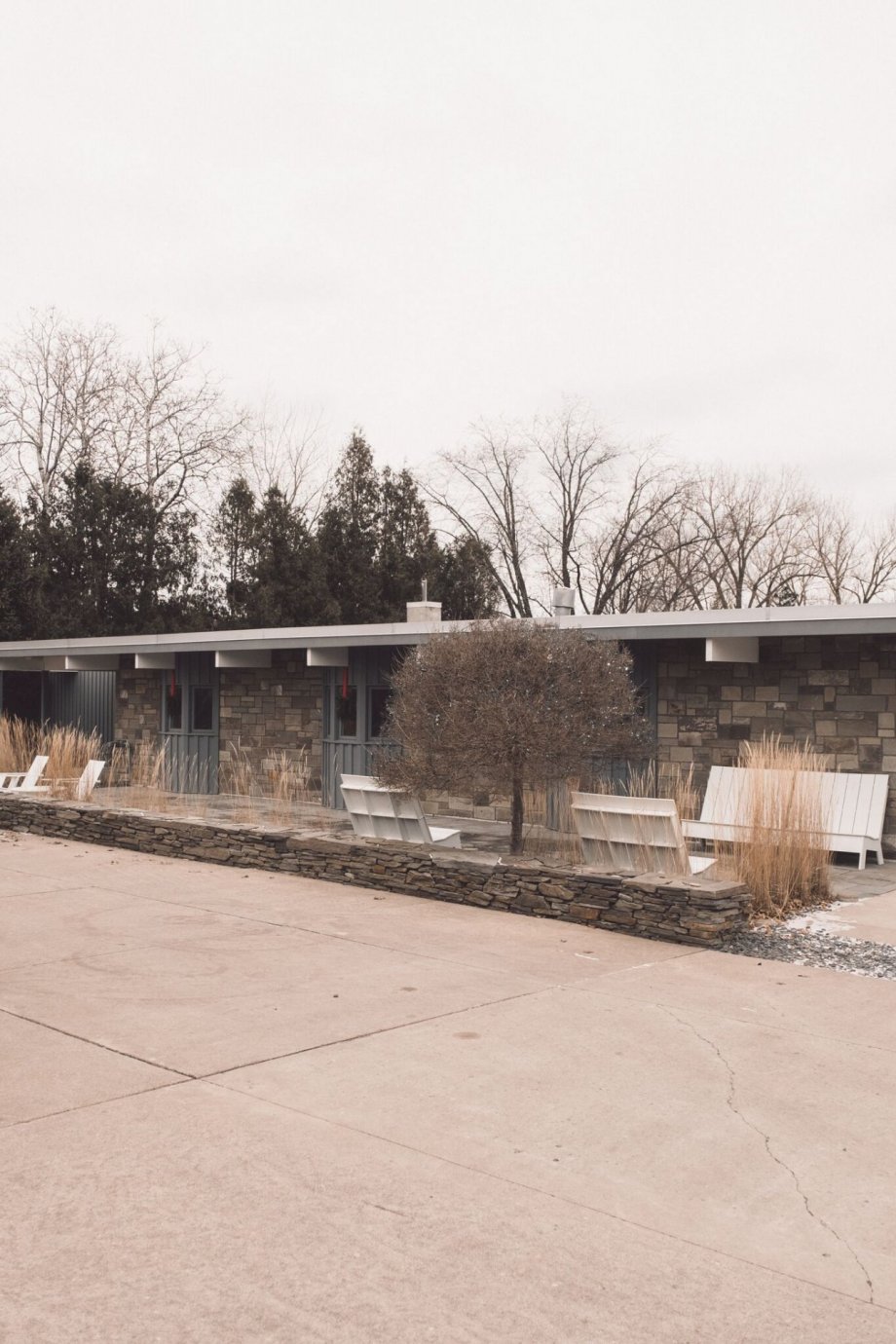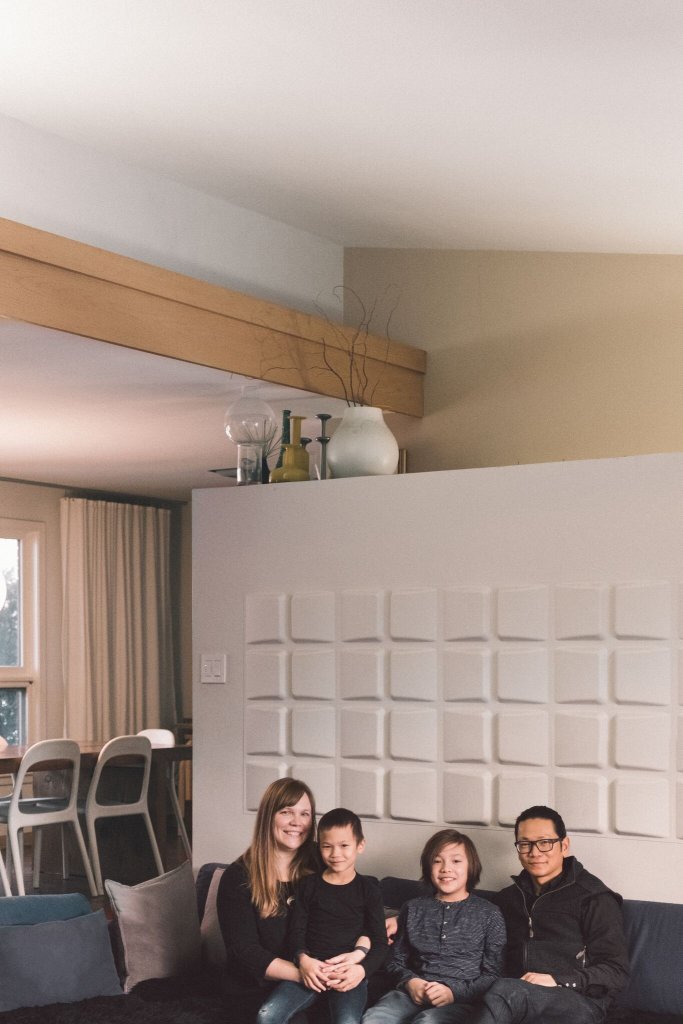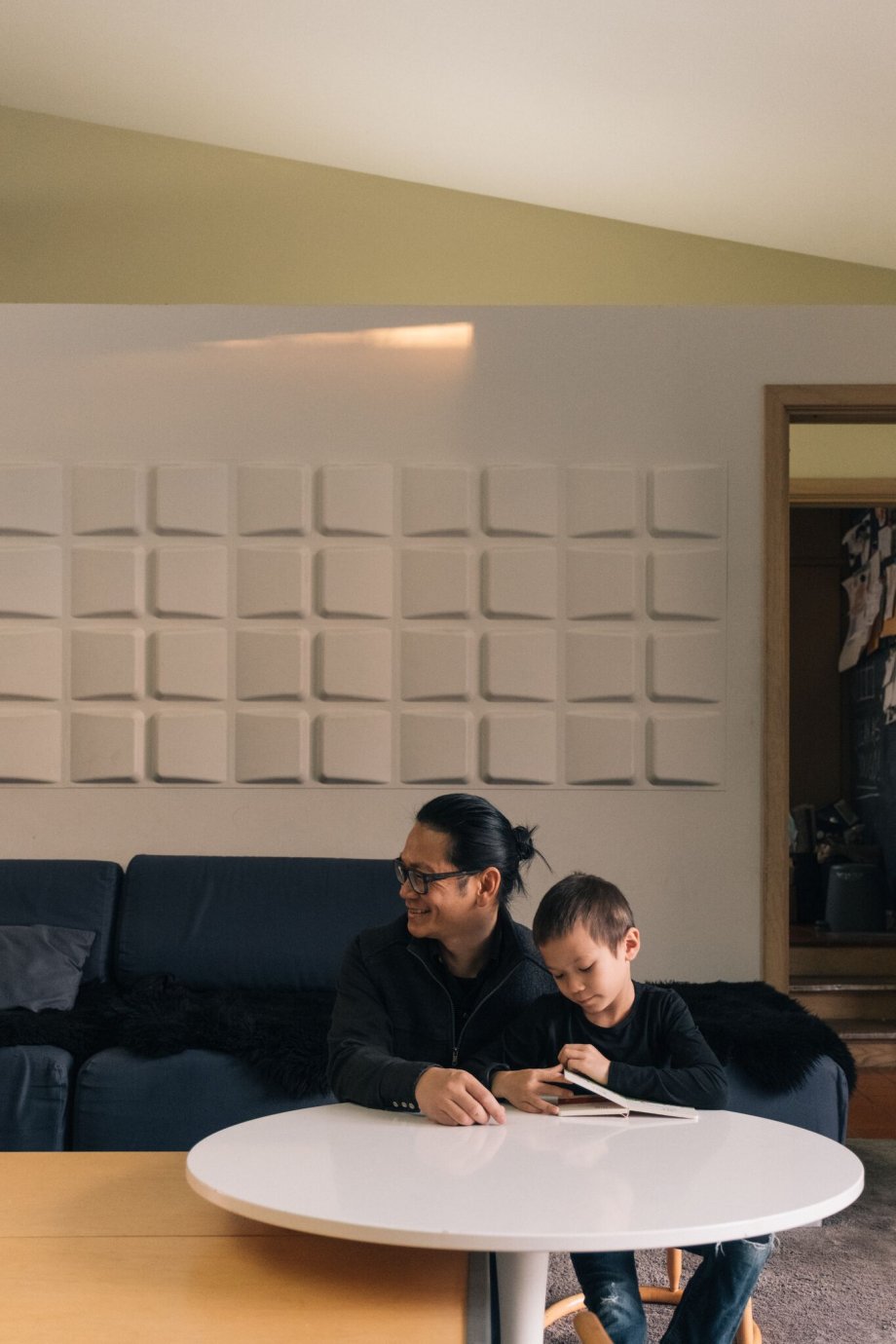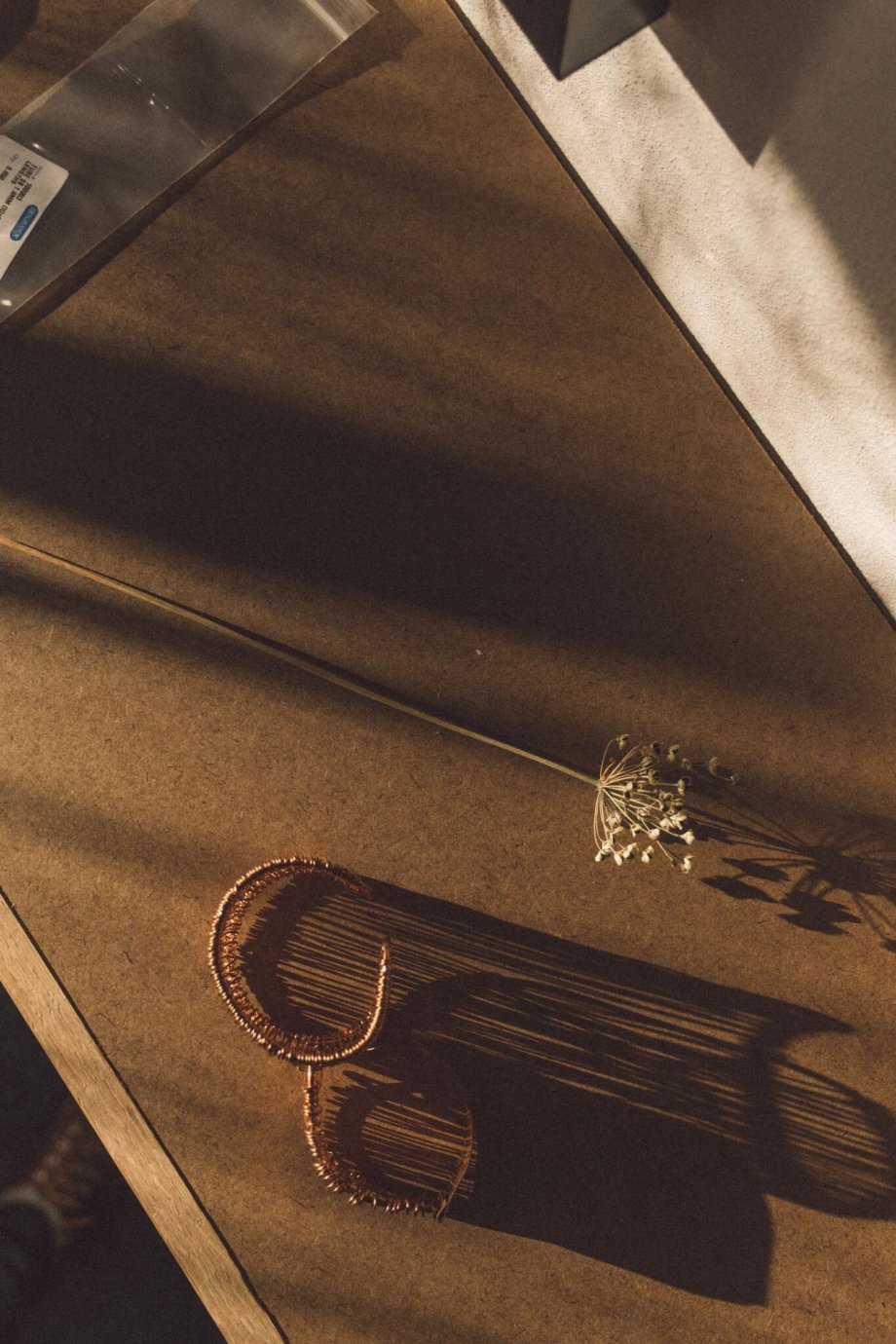A Marriage of True Grit in Minnesota: Tia and Souliyahn Keobounpheng of Silver Cocoon
silver cocoon interior design natural light architecture midcentury
cocoon3-min
cocoon4-min
cocoon5-min
cocoon7-min
cocoon1-min
cocoon8-min
cocoon9-min
cocoon10-min
cocoon11-min
cocoon12-min
cocoon14-min
On the western edge of North Minneapolis and Golden Valley, husband-wife creative team Tia and Souliyahn Keobounpheng occupy a ’70s-style ranch home in the way that only two architecture-school graduates could. Lined with artwork they’ve made and collected over the years, the home has become a living gallery, bookended by Souliyahn’s wooden-wall texture explorations and Tia’s watercolor paintings.Over time, the property has become further layered with intimate details, like thumbprints left behind by their children on the walls and the expansion of the vegetable garden Souliyahn built with their son Silo in the backyard, who was four at the time. A gleaming silver Airstream they purchased—which served as inspiration for the naming of the couple’s brand—sits along a wooden fence in their backyard, nestled among plants and foliage.Together, Tia and Souliyahn run Silver Cocoon, a moniker encompassing their smorgasbord of creative projects: Tia’s art, design and jewelry practice, as well as Souliyahn’s art and architecture work. Sometimes they undertake projects together; sometimes they buzz alongside one another, engrossed in their own explorations.In addition to Silver Cocoon, Souliyahn also works full time at a metal-fabrication company, MG McGrath Architectural Surfaces—which, as he says, is not dissimilar to what his wife does in her studio with tiny metal sculptures, albeit on a larger scale. Souliyahn’s litany of credits include designing several private residences, often inspired by midcentury-modern architecture, and among fans of Tia’s jewelry is famed author Cheryl Strayed, also a Minnesota native.Sitting down in their kitchen for an interview, Souliyahn pulls on his short black ponytail and offers dry humor while Tia eagerly gives a tour of their home.One can’t help but think she’d greet any guest—even one who wasn’t there for the express purpose of writing a 2,000-word print-magazine feature—with the same level of vibrance.We’re gazed upon by one of Souliyahn’s large abstract paintings on wood in the kitchen while their two young children—Silo, now 12, and Veli, 7—play with water guns in the frontyard. It’s the end of April, seventy-five degrees and sunny, but just last weekend, in true Twin Cities fashion, the city was smothered by a blizzard producing two feet of snow—the most they’ve had all winter. There are still piles of it on the streets, some the size of a Volkswagen Beetle, stingily refusing to melt.The couple met here years ago when they were both studying architecture at the University of Minnesota- Twin Cities, when Tia, a junior at the time, had been encouraged by a professor to attend a lecture about the design of the paperclip. Souliyahn had recently graduated with a master’s degree but saw that famous designer Bill Stumpf was lecturing about the Aeron chair and decided to attend. Souliyahn and Tia met afterwards while talking to a mutual friend, on an otherwise unremarkable Saturday morning. “It all started with the paperclip!” Souliyahn wryly jokes.“Tia’s class was encouraged to go to these lectures, and I just didn’t have anything to do on a Saturday.” Souliyahn had been planning to move to one of the coasts, having narrowed down San Francisco, Seattle and New York as possibilities. “He was eyeing New York, because at that time there was nothing keeping him in Minneapolis,” says Tia. “Then once we started dating, we planned to wait one year, so I could finish school. Then we’d move to New York City together.”Souliyahn began working for Tia’s father, renowned architect David Salmela, in Duluth, Minnesota, while she finished her degree. He was the first employee her father had, and what was originally intended to last for one year transformed into a working relationship that has endured nearly two decades. “I don’t think Souliyahn really knew what he was getting into,” Tia says, laughing. “After that—we just never left.”Born in the tiny town of Virginia, Minnesota, on the Iron Range, Tia and her family moved to Duluth when she was 12. Souliyahn, born in Laos to a family of rice farmers, came to the U.S. in 1979 when he was eight years old, during the Indochina refugee crisis after the Vietnam War.His father served as a clerk in the Laotian army and was forbidden to leave the country, so he sent his wife and children to Thailand, where Souliyahn’s mother is from. The family awaited resettlement in a refugee camp in Thailand while his father took the perilous journey across the Mekong River to get to Thailand, using homemade decoys. “He had a fifty-fifty chance the patrol would shoot at the decoy instead of him,” Tia explains. Souliyahn’s father survived but was immediately sent to a refugee camp in Thailand, where the family joined him. “It’s a common story: refugees escaping Laos at the time to go to Thailand or surrounding countries,” says Souliyahn.When asked about what life was like in the refugee camp, as one of their sons did recently, his answer is surprising, to say the least: “Honestly, I don’t know how to say this. But as a kid—it was fun. We didn’t really know what was going on, and I got to run around and play with all the other kids all day,” he remembers.The family was eventually sponsored by a church in Minneapolis—which may as well have been another planet—where they landed in the dead of winter on Feb. 1, 1979. “Souliyahn sees everything really differently, because of all that,” says Tia. “He has such a fresh perspective.”Souliyahn has since made it a point to absorb as much information as possible about the conflict, among other topics. “He’s not constantly sharing it, but he’s this untapped pool of knowledge. You might be talking to him about a random topic he happens to have researched, and you’ll know 10 times more about it than you did before. He just knows things,” says Tia.Around the time Souliyahn began working with Tia’s father, she decided to embark on a master’s program in design, which she soon found to be an ill-fitting solution. “That became very clear, so I dropped out. I was really floundering during that time, so I just went back to making things,” she says. She’d been joyfully experimenting with weaving and linoleum-block printing when the September 11th attacks happened, plaguing her with the fear that what she was doing wasn’t practical enough. “I just completely closed up. I thought, ‘I need to get a real job and be responsible.’”She took on a string of jobs in Minneapolis: managing a design shop, crafting showroom settings for IKEA and working for her father among them. She began making jewelry 11 years ago, in 2007, around the time she and Souliyahn had planned to move again—this time, to Portland. Tia’s father, who still employed Souliyahn at the time, awarded him a sizeable raise, which kept them in Minneapolis. “We never made it to New York or Portland,” says Tia. “And for a while, I think we felt that dream had gone unfulfilled. But now we’re happy where we are, settled in this house.”Through the continued process of experimentation, she made her way into laser-cut jewelry made of wood and acrylic, the foundation for the pieces on the Silver Cocoon website, which range from chunky earrings and bracelets to statement necklaces. Bit by bit she kept at it, culminating in a trunk show at the Walker Art Center. It was the push she needed to transform her passion into a business when yet another blow came: the 2008 recession hit, and architects were laid off in droves.“No one was building houses at the time,” Souliyahn explains. “It was pretty rough for a while,” says Tia.“We’ve gotten good at renovations because for many years that was all people were doing, and we took on a lot of smaller projects—which actually made for some of our best work.”Tia kept making jewelry in earnest, trying every possible strategy to transition it into a business while caring for her two young children. Plagued with emotional and physical fatigue, which she later learned was attributed to a bout of postnatal depletion, by 2014 she had grown utterly weary. “I started having really strong anxiety and panic attacks; I couldn’t sleep,” she says.“Going back to the roots of what Silver Cocoon has always been, for me, is part of what really pulled me out of that place. I started working with metal and received a really competitive grant to help build out that part of my practice. I began to tear down those walls I’d put up, about needing to be practical and responsible. I’ve been working really hard to sift out exterior pressures from interior desires. And I’ve been able to really grow from there.”An influx of jewelry orders came when author Cheryl Strayed posted a photo of Silver Cocoon earrings on Instagram, requesting to know who made them. Strayed had previously come to Minneapolis for a public talk and book signing which Tia and Souliyahn had attended, where they waited in line with hundreds of other people to meet her. Strayed’s talk had focused on her early writing career and life in Portland with her husband, a documentary filmmaker, as they struggled to make ends meet as working artists. It felt much like Tia and Souliyahn’s story.At a crossroads between writing her first book and taking a steady teaching job, Strayed shared with the audience that it was unlikely she’d have the capacity to write what became her enormously successful memoir, “Wild,” if she’d taken the teaching job.“She talked about how our energy is finite: what we give of ourselves to one thing takes it away from something else. That really resonated with me. It was so powerful,” says Tia. She had brought a special pair of earrings she’d made for Strayed, who graciously thanked her upon receiving them.Then, in May of the following year, Tia got a text from a friend, imploring her to check her Instagram page. “Cheryl had posted a picture of herself wearing the earrings I’d made with a caption asking who’d made them. I posted back, and within a few minutes she had placed an order. I couldn’t believe it!” Tia recounts. They’ve since continued a mutually fruitful partnership—Tia even designed the piece Strayed wore for a televised interview with Oprah.Souliyahn says his own path—or a stumble, as he calls it—that led him into the design field began during long hours in the art room at school. Upon moving to the U.S., his parents found work and focused their efforts on gathering basic living expenses, while the children were thrust headfirst into the American public-school system. They had to quickly learn English and also negotiate between the cultures at school and at home. The language barrier was isolating, which led him to spend extended time in the school’s art room, where he’d draw, paint and craft pieces out of clay. He attended community college after high school until a few friends, who’d gone on to the University of Minnesota-Twin Cities, encouraged him to apply to the school’s architecture program.The first time he applied, his application was rejected—which led him to attend a portfolio review held by Dennis Grebner, who would later become his professor. Grebner told him that he had the skills to be an architect, but that architecture was really about learning to communicate through design more than anything else, which his portfolio needed to reflect. “The next year, I got in,” says Souliyahn.In school, he was exposed to great architects like Frank Lloyd Wright and Antoni Gaudi, whose works continue to inspire his own. As he gained knowledge and skill, the endeavor to become an architect unveiled itself as a much deeper journey than he’d originally anticipated. “Design is a cumulative process,” he says. “As you absorb more information, knowledge and experience, it shows up in your designs as you mature. Architects are really at their peak around age 50 or 60, when people in most other professions are retiring.”“What was the other thing that your professor told you?” Tia asks Souliyahn, quizzically.“What did he tell me? He told me a lot of things,” he answers, laughing.“The thing about how basically anyone can be an architect.”“Ah. Right. Dennis always told me that with architecture, to be successful, you really have to put in the time. You may have an innate skill or talent, but if you don’t put in the time, you’re not going to go anywhere. And if you don’t have the skill, but you put in the time, you might.”The concept exemplifies the kind of faith required to make successful art that led Tia to her current watercolor-flow practice, in which she creates a new painting every day. She says it conjures a similar effect to yoga or meditation, forcing her to stay in the present moment. Looking at the paintings, you can see her reaching for a kind of freedom in each brush stroke. “If the moment is all you have, you can’t project too far out. You can’t think to yourself, ‘I’ll get that when I’m 65.’ You might not make it to 65. Instead, I try to focus on what I can work on today.”With their tightly wound family unit, they’re free to enjoy the sun, harvest vegetables from their garden, watch their children grow and continue tackling life’s larger questions, transforming into their own answers. “I remember very consciously thinking about how so often, people get a secure job that they might not love, but that they can handle doing for a number of years before they retire and pursue their passions,” says Tia. “I kept thinking, ‘Why wouldn’t you just find a way to do what you want to do and make it work?’ Making things brings me closer to my purpose,” she concludes, affirmatively.“Right,” her husband adds. “And if you’re doing something you really enjoy, you might not even want to retire. You don’t need a 401k, because you’re going to work until you die, doing what you love.”All photos by Attilio D'Agostino. This story was originally published in ALIVE Magazine Issue Three. Purchase a copy or subscribe to ALIVE at alivemag.com/subscribe.

